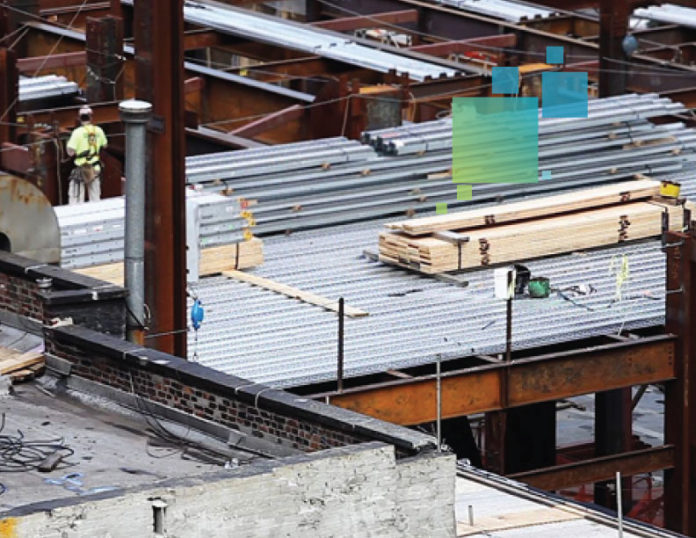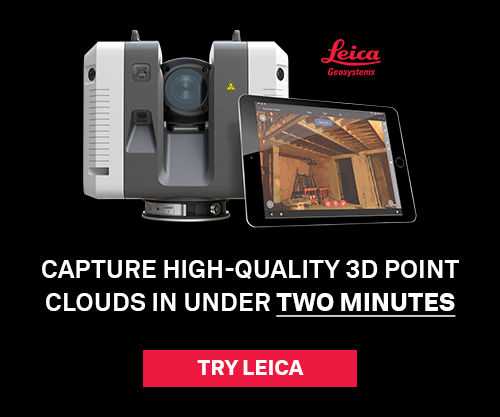Bradford Construction has been a forward-thinking business for over 25 years. In addition to maintaining a sharp focus on budget, safety and scheduling – and consulting with woman- and minority-owned businesses across the country – Bradford is also an early adopter of 3D laser scanning and building information modeling (BIM). “We wanted to integrate our systems so that we could improve the accuracy of our information,” said Sandra Wilkin, founder and president of the Bradford Companies, in a 2015 interview. “That’s when we started looking at how we could leverage BIM processes.”
The goal was simple: create “smart” jobsites that are safer, more accurate, and save clients time and money in the long run.
Bradford knew it needed a team that really understood BIM processes and could explain the value to its clients, as well as usher its network of subcontractors into how they, too, could utilize these new technologies.
Rather than build its own team in-house, Bradford partnered with M.Arch Architects to serve as its BIM department, led by March Chadwick. The two firms now share conjoining office space.
“We knew we had expertise in BIM, but not the depth that March and his team has, so by collaborating with them, we ensure our clients get the best possible service,” said Wilkin.
Selling the Benefits of BIM

Since adopting BIM, Bradford has seen transformative benefits such as compressed scheduling, a reduction in change orders and significant cost savings.
But for some of Bradford’s clients, many of which are large public agencies with complex decision-making processes involving multiple departments, conveying the benefits of BIM and explaining exactly what it is has been challenging.
“Our clients are open to BIM and want to learn more about how it can help them, but by definition, it’s a difficult concept to explain,” Wilkin said. “Many think of ‘BIM’ as software. They don’t quite grasp the idea that it’s a business model as much as it’s an information model.”
At Bradford Construction, for example, BIM often starts on the construction site with the capture of existing conditions using a high-accuracy laser scanner to inform the model. The model is then created around the point clouds, and construction layout points are added to make installation easier and more accurate.
In the field, the team uses total stations and multistations to replicate the layout points on the jobsite, then captures point clouds during construction using multistations and laser scanners for as-builting and quality assurance. The process is highly efficient and accurate, substantially reducing rework and risk.
Though many clients began using BIM solely on larger projects, as they have realized the value, there has been an increase in using BIM protocols on restoration work and smaller-scale projects such as schools, Wilkin said. There has also been an increase in adoption with Bradford’s subcontractors.
“We are seeing more and more subcontractors looking at BIM as a cost-savings for them,” said Wilkin. “They are either hiring an outside organization like us to do their BIM or some of the larger subs are developing their own BIM processes in-house. Not every sub uses it, but at this point when we mention ‘BIM,’ they all recognize the importance of it.”
For those subcontractors who need help with BIM on contracts that require it, Bradford and M.Arch Architects will translate the work for them into as-built drawings or 3D BIM models.
BIM and Disaster Recovery
Today, Bradford is working on several projects in the New York area as part of the recovery effort around Hurricane Sandy.
“We work with the largest apartment company in that area, which is still recovering from the impact the storm had on homes and apartments,” said Wilkin. “We are helping them develop BIM processes and using laser scanning to collect accurate information to help with renovations and repairs on thousands of buildings.”
Together with M. Arch Architects, Bradford also uses high definition laser scanning to transform clients’ ideas into 3D drawings that can be used in the field. This includes special inspections to accelerate the pace of construction and to verify accuracy of design intent in the field.
“Whenever we look through a Leica Geosystems lens, we are looking into the future,” said Chadwick. “As architects, we are always concerned about the present, but what we sell is the future – what can be. Laser scanning is a huge part of our lives. It allows us to spend less time verifying and more time planning.”
Perhaps these sentiments are no better explained than with a recent example in downtown Manhattan. Soon after the World Financial Center, also known as Amex Tower, had completed construction, the 911 terrorist attacks struck New York just across the street.
“There was an impact to the building from the aftermath of the World Trade Center that damaged the architectural integrity of one of NYC’s tallest, and most visible, buildings,” Wilkin said. “There was concern that a façade created by a highly influential prize-winning architect could not be replicated.”
Bradford used laser scanners to scan the areas of the building that were too difficult to measure with traditional methods. Using the scan data and resulting model, a set of accurate drawings was created for the steel contractor to use to create an exact replica of the building as César Pelli designed it in 1985.
“We are BIM evangelists – we truly believe in BIM,” said Wilkin. “It is one of our missions to solve problems for our clients, and BIM clearly does that. As it catches on and more people see the value, it’s a language that will be seen and is being seen throughout the world.”
Bradford has always had its eye on the future.Its own website says it best: You don’t have to wait for the future of 3D laser scanning to BIM. At Bradford Construction, it’s already here. And like the world – BIM also continues to evolve.
“When I was in school at Georgia Tech, I drew designs with lines and pencils. Then, I went back to school to learn how to draw the same lines on a computer,” Chadwick said. “That has now evolved into information models that share geospatial information. This technology will take a shift in management of ownership to understand the true value, but in the end – it will help us build better buildings.”
For more information about how you can apply BIM solutions in your business, please contact us.






